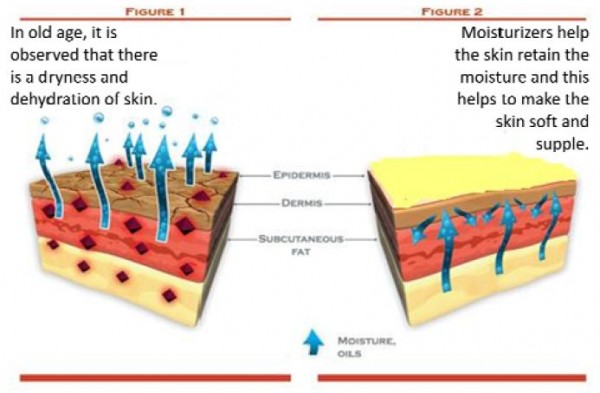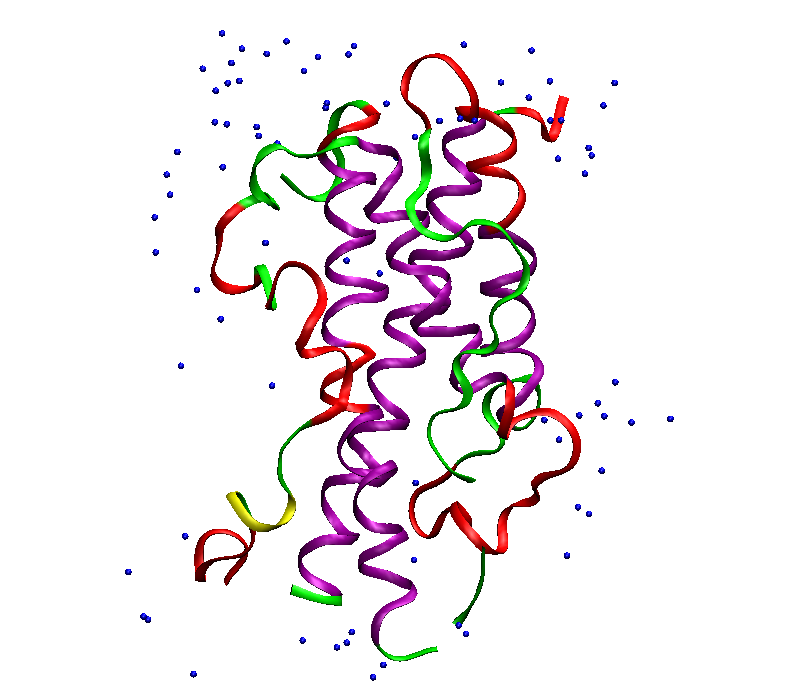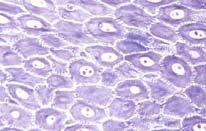Introduction
The skin is the most superficial part of the body. The signs of ageing are most visible in the skin. Although, ageing skin is not a threat to a person, it can have a detrimental effect on the psychology of a person. A look into the causes of skin ageing, the available treatments and preventive measures for this inevitable change is important to help both the already aged, as well as, the youth.
This is a 4 part article in which:
- Part 1 – Discusses the structure of skin and its different components
- Part 2 – Discusses cutaneous ageing and its causes
- Part 3 – Discusses the characteristics of ageing skin and the changes in skin appearance
- Part 4 – Discusses products and treatments for skin ageing
a) Sunscreen Agents
b) Moisturizers (current article)
c) Antioxidants
d) Make Up
e) Dermal Fillers
f) Chemical Peels
g) Botulinum Toxin
h) Estrogen and Hormonal Treatments
i) Plastic Surgery
Moisturizers1,2,3
In old age, dryness of skin is observed. To prevent this dryness, moisturizers are used. Water is the only material that would plasticize the outer dead layers of the epidermis, to give the much desired attribute called soft, smooth skin. If water is lost more rapidly from stratum corneum than it is received from lower layers of the epidermis, the skin becomes dehydrated and loses its flexibility.
Dryness of aged skin is mainly due to UV exposure. There are three approaches to restore water content of skin:
- Occlusives:
A thin film is formed over the skin which prevents water loss. Occlusion of the skin results in an immediate decrease in the rate of water loss through the epidermis. This has the desired effect of causing the stratum corneum to become more hydrated and making it softer and supple. However, this effect is transient, and the water loss is higher than the pretreatment value. But this drawback does not reduce its usefulness in moisturizing. Man non-permeable substances may be used such as mineral oils, vegetable oils, lanolin, silicones, extracts from plants (such as aloe vera extract, bamboo and cactus extracts).
More recently skin substantive barrier materials based on quaternary ammonium complexes have become available, which seems to be able to prevent trans-epidermal water loss without putting an occlusive or greasy barrier. These act not only as moisturizers, but also as emollients i.e. skin conditioners; e.g. Quaternium 19, hydroxyethylcellulose derivatives. - Humectants:
Their role is to attract water from the atmosphere to supplement the skins water content. Although popular in use it is debated that externally applied water will not increase the flexibility of the stratum corneum. In fact, it can have precisely the opposite effect. Humectants mostly used in moisturizers are glycerol, ethylene glycol, propylene glycol and sorbitol, either alone or in admixtures. In a test conducted, none of the humectants had any effect in increasing the uptake of water by the skin. Sodium Lactate which is one of the water extractable materials in the skin was found to increase the uptake of water. It acts as a buffer as well as humectant and is compatible with most other cosmetic materials. - Restoration of deficient material:
To restore skin moisture depends on the determination of the precise mechanism of the natural moisturization process. To assess what is gone with the dry skin and to replace any material which maybe deficient. Researchers demonstrated that there is natural moisturizing factor (NMF) in the skin. This NMF can be removed by the means of water, polar solvents, and detergent solutions. It is found that NMF is of amino‐lipid nature, and maybe a mucoprotein complex or a lipomucopolysaccharide complex. Sodium‐2‐pyrollidone‐5‐carboxylate has been identified as a naturally occurring humectant and has been shown to be useful in moisturizing dry flaky skin. Furyl glycine and furyl hydantoin have been recommended to be used in moisturizers.
Facile addition of water on skin is not sufficient to plasticize it. Water in the skin is bound in protein lipid complexes, possibly in the dead cells, and only in this form it is effective in keeping the skin soft. Simple application of water soluble components of NMF such as sodium pyrollidone carboxylate, and sodium lactate are inefficient as they do not have affinity for most layers of the skin. Administration of NMF using novel drug delivery systems such as niosomes should be looked into.
A condition called Xerosis in which there is continuous loss of water from the stratum corneum through evaporation from the surface, generally occurs in the elderly. The cells accumulate giving the skin a white and scaling aspect. Such skin show thicker fissured and disorganized horny layer. Moisturizers can be helpful as they decelerate the loss of humidity from the surface of the skin. Fine wrinkles are more visible when the skin is too dry, and thus hydration can make wrinkles less obvious.
References
- Elderly skin and its rejuvenation: products and procedures for the aging skin, Marcia Ramos‐e‐Silva et. al., Journal of Cosmetic Dermatology, 6, 40–50
- Harrys cosmeticology, J. D. Wilkinson and R. J. Moore, Longman Singapore Publishers ltd. Pg 222 ‐ 258(sunscreens and suntan oils)
- Cosmetics Formulation Manufacturing and Quality Control, P. P. Sharma, Vandana Publications pvt. Ltd. Pg 195 – 198, 183 – 185.




Making the stratum corneum software and supple!
Your point is duly noted and a correction is made.